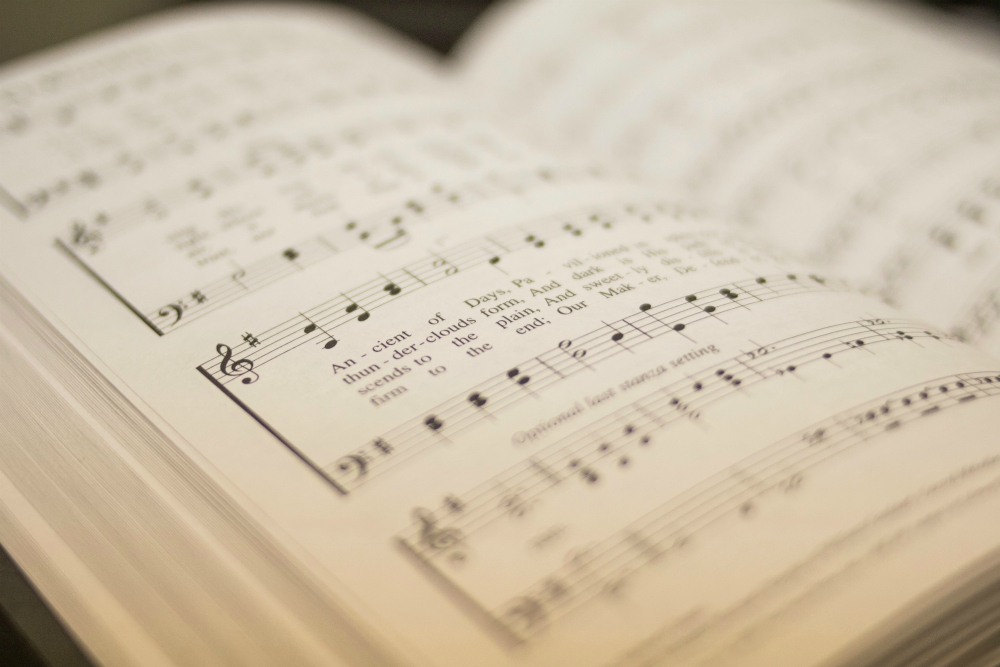
(Unsplash/Michael Maasen)
If the Gospel of Luke were performed as musical theater, the melodies accompanying the Emmaus journey would sound hauntingly familiar because they would reprise the entire Gospel. We would hear the joyful chorales that accompanied healings and the whimsical jingles created each time Jesus outfoxed leaders and lawyers.
There would be the expected strains from the Passion as the two travelers discussed all that had just happened. Those would be accompanied by ominous percussion as the disciples attempted to enlighten their anonymous companion about what had happened. The music that had accompanied Jesus' death would resonate underneath their description of the crucifixion.
The music would come to a sudden halt just after they said, "We were hoping that he would be the one to redeem Israel."
Surprisingly, the melody of the Nativity would play lightly in the background as they told of their astonishment at the women's news, the presence of angels, and the announcement that he was alive. The music of Mary's Magnificat would provide the melody for the stranger's explanation of the Scriptures.
As they talked and walked, the travelers would subconsciously start humming or whistling the tunes they had sung during their years on the road with Jesus.
Arriving at their destination, the disciples would repeat the innkeeper's song from the Nativity story, replacing his impatient "Go away, there is no room," with "Abide with us! The time is short, abide with us."
As they sit at the table, strains of the theme sung at the sharing among the 5,000 and every other meal they had eaten with him would be repeated by a chorale subtly populating the rear part of the stage.
The climax would come as Jesus began to break the bread. He would intone the very words he had sung at their last supper together and orchestration and singing would swell like a Handel chorus. As Jesus sings his words of thanksgiving, the disciples would gradually join in the blessing, sharing the bread and singing with him: "This is my body, my very self. I am given for you. Do this always in remembrance of me."
Advertisement
By the third round of singing the refrain, the audience too would be singing the chorus.
It's too bad that musicals weren't in style when Luke was writing. But Luke told the story in his own way for an audience of Greek-speaking Christians. People of each time and culture have to interpret it for themselves and make it real for their neighbors while safeguarding the essential details.
The essence of this story is that the disciples remembered and allowed themselves to be touched and transformed. Mourning Jesus' death, they were also grieving the loss of their hopes and dreams. As people who had fallen in love with Jesus and his vision, whether they had fled or stood at the foot of the cross, they had died with him in some way. Everything they had invested in him had been cruelly mocked, murdered, and buried.
The Risen Lord met them just where they were, allowing them to tell their story of sadness and defeat. Then, once again, he told his story.
He reframed their perception of death and loss through his perspective — a perspective they had resisted time and again. Attachment to their own versions of strength, prestige and success had prevented them from being caught up in transforming the reign of God. Only now, after their hopes had died, were their hearts finally broken and empty enough for his power to fill them.
Sorrowful hearts burned again — just enough to ask him to stay. And in this breaking of the bread, as if for the first time, they glimpsed the truth of who he was.
The Jesus who had walked with them was with them now, beyond the realm of death and dying. The God he had introduced to them was no mighty victor or avenger, but the creative transformer, always inviting them into communion. They understood, at least for a moment.
The Resurrection narratives, different as they are, have essential elements in common. The Risen Lord is hard to recognize until disciples become free of their own expectations. When disciples recognized Jesus, there was an ecstatic burst of insight, followed by the realization that they couldn't cling to the moment.
Finally, the disciples who encountered the Risen Lord all became apostles: people impelled to share the good news that had transformed them.
If the Gospel were a musical, we would keep learning its songs, comprehending their meaning in ever-deeper ways and learning to appreciate the story's endless capacity for the harmonies that can only come from a great diversity of voices. But the point is not to be a choir, but to perform the Gospel, off stage, on the road, wherever we are.
[St. Joseph Sr. Mary M. McGlone is currently serving on the congregational leadership team of the Sisters of St. Joseph of Carondelet.]
